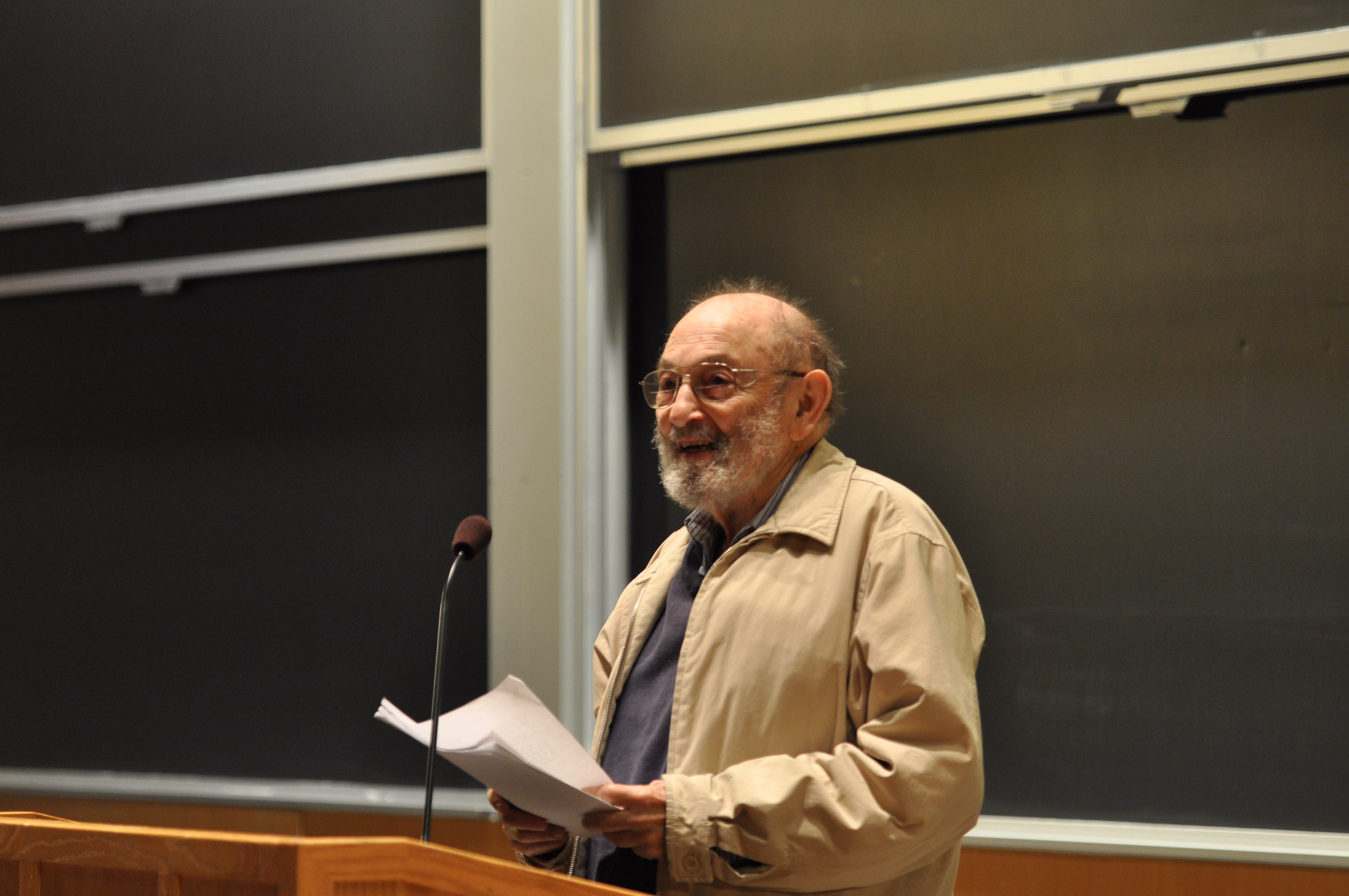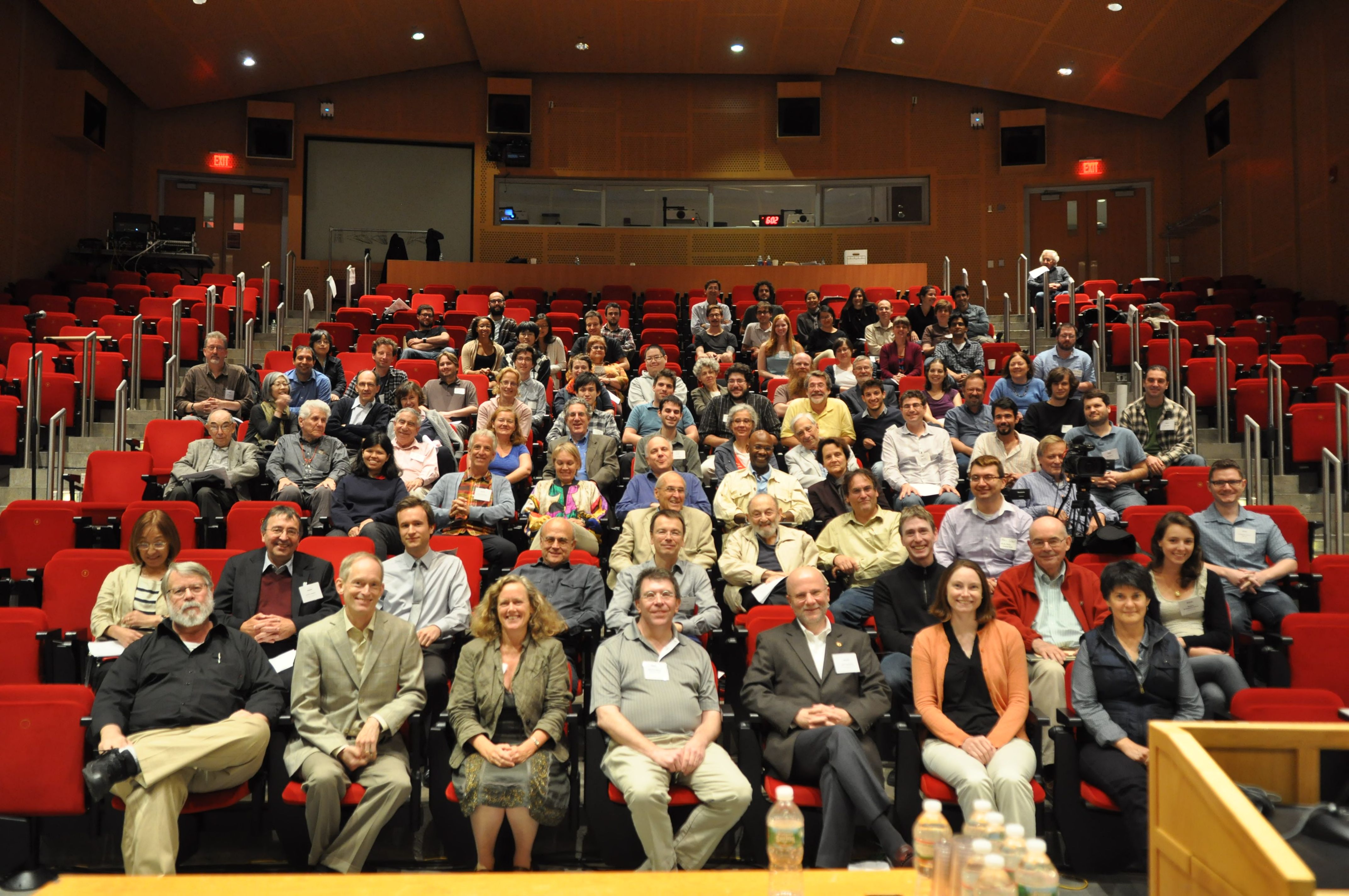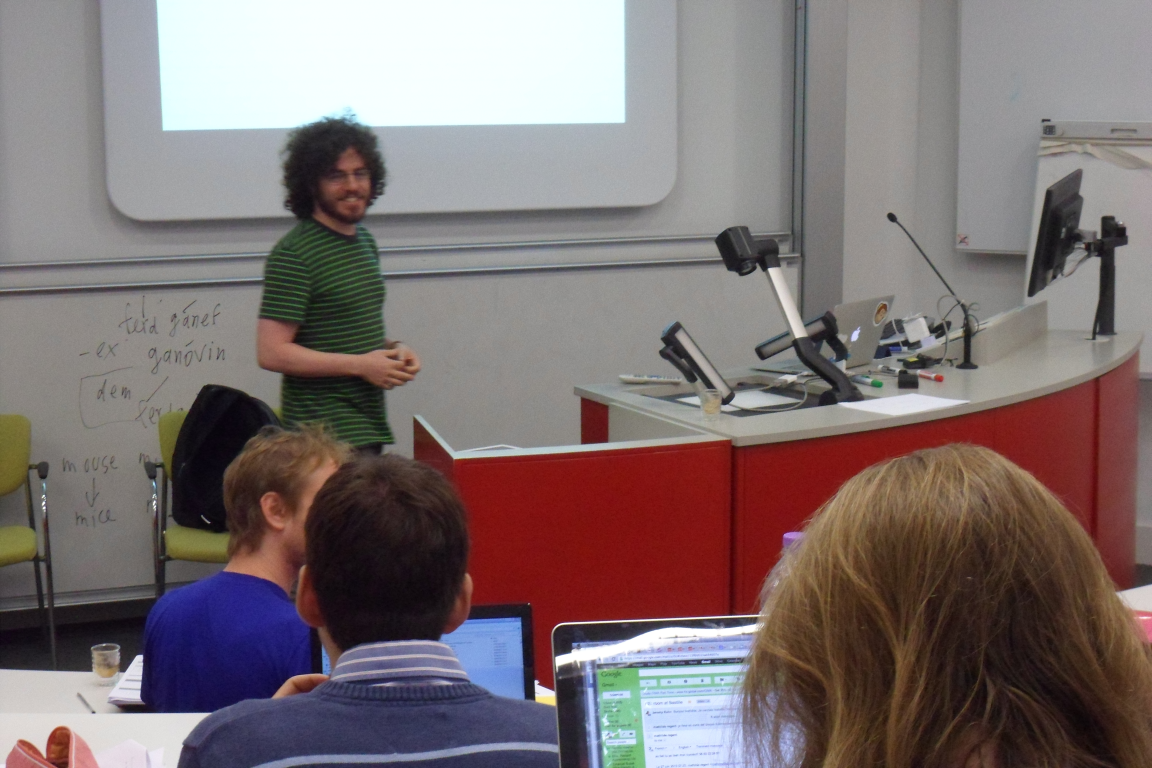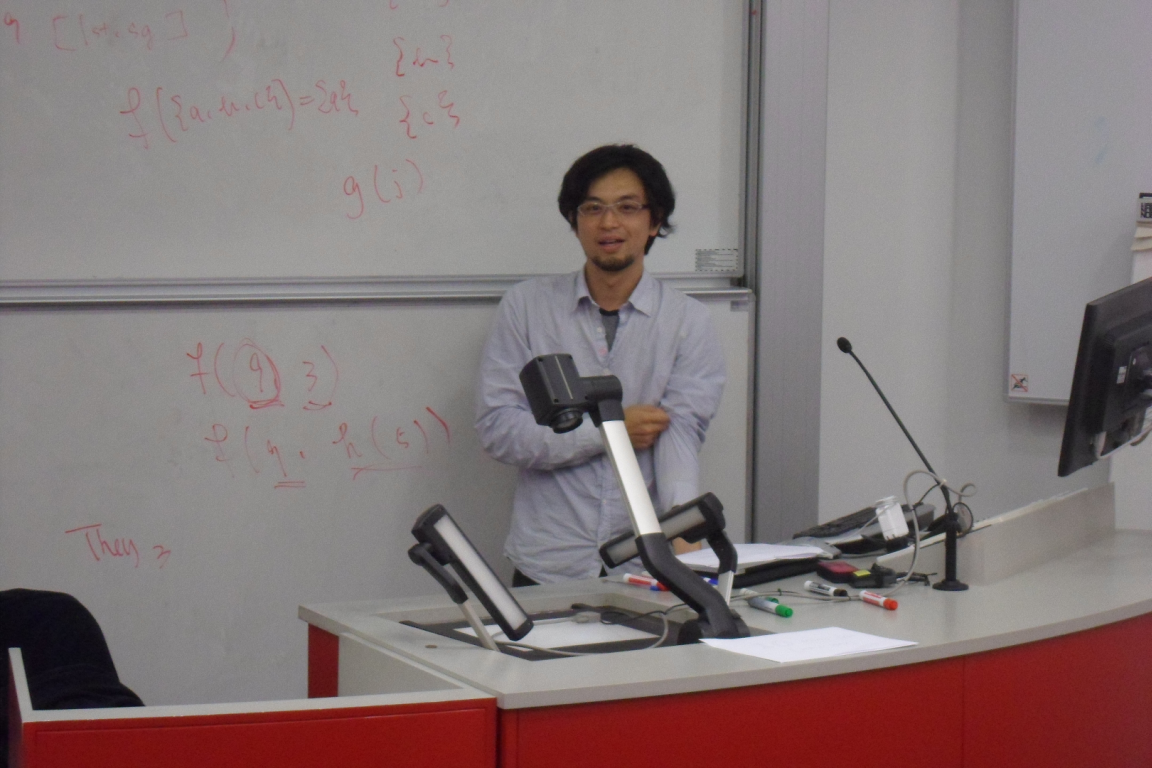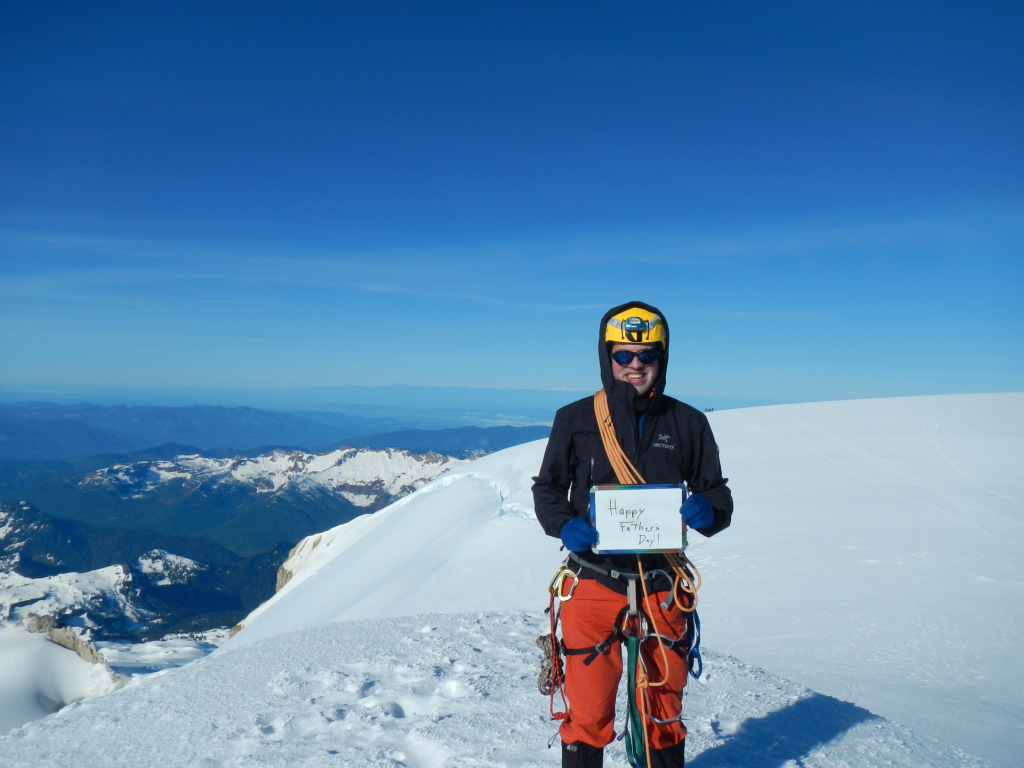24.956 Topics in Syntax: Movement - what is it and how does it work?
Instructors: Norvin Richards & David Pesetsky
Monday 2:30-5:30pm, 32-D461
The existence and ubiquity of syntactic movement is one of the signature discoveries of the last half-century of research on syntax. With the realization that syntactic constituents may occupy multiple positions in phrase structure has come a cascade of findings, questions, and new conundrums that could not have been imagined before the discovery of movement. Why does movement exist? Why are there locality limitations on movement, what are they, and where do they come from? What determines the size of moved constituents? Why do types of movements seem to sort into A vs. A-bar varieties, and how do they interact? What types of dependencies instantiate movement — for example, is control a variety of movement?
This seminar will have a broad focus, covering many topics related to movement, in an attempt to learn the state of the art on some of these questions, and (if we are lucky) to push the state of the art forward a bit. If we succeed, the class will provide you with “news you can use” in your own syntactic research, by offering both a big picture and serious discussion of an array of exciting open problems.
24.964 More Advanced Phonology
Instructor: Edward Flemming
Friday 11am-2pm, 32-D461
24.964 this semester is ‘More Advanced Phonology’ or Phonology III rather than a seminar on a single research topic. Candidate topics are listed below. We will start with stochastic phonology, then cover additional topics depending on time and interest.
(1) Stochastic phonology
We will read key papers on the analysis of probabilistic phonological patterns, e.g. patterns where there is some free variation or exceptionality and the probability of a particular variant (or an exception) depends on phonological properties. We will focus on three interrelated questions:
(i) What is the relationship between categorical and stochastic phonology? Is the former just a limiting case of the latter, or are they distinct in some way?
(ii) What is the mechanism of constraint interaction in stochastic phonology? Frameworks differ substantially on this point, e.g. Stochastic OT is based on strict constraint domination, whereas MaxEnt grammars sum constraint violations.
(iii) Are all types of probabilistic phonological patterns amenable to a single form of analysis?
(2) Laryngeal neutralization and assimilation in obstruents
The typology of patterns of neutralization of voicing and aspiration contrasts, focusing on phenomena that motivate extensions and modifications to existing analyses. These include asymmetrical voicing assimilation (e.g. Hebrew, Arabic dialects, Ukrainian), consonants that undergo, but do not trigger, voicing assimilation (e.g. Hungarian, Russian, Czech), voicing of obstruents before sonorants (e.g. Krakow Polish, Slovak), morphological effects on voicing neutralization (e.g. German). The goal is to review the theoretic background, then investigate some of these phenomena based on data we collect during the course.
(3) Phonetic grammars
It has long been known that the grammars of languages must regulate relatively fine details of phonetic realization, but relatively little is known about the form of the relevant component of grammar. We will study a model based on weighted constraints (Flemming 2001) and investigate interactions between phonetics and phonology in light of this model.
(4) Do speakers’ grammars contain phonetically-based constraints?
Phonological typology has been shown to reflect a variety of phonetically-based constraints, but it remains controversial whether these constraints play a role in individual grammars, or whether they are external to grammar, applying only through processes of sound change (e.g. Blevins 2004). We will try to clarify the empirical claims that are at issue here and examine experimental evidence that bears on those claims.
24.979 Models of Information Structure Meaning and Expression
Instructor: Noah Constant
Tuesday 10am-1pm, 32-D461
This course explores how information structure is conveyed across languages, with the goals of: (i) gaining familiarity with different conceptions of information-structural distinctions like topic/focus, given/new, and contrastive/non-contrastive, (ii) gaining familiarity with the facts of how these distinctions are signaled (or not signaled) in different languages, and (iii) comparing recent formalisms of information-structural categories and realizations, with attention to their ability to extend to the range of observed cross-linguistic phenomena.
On the semantic/pragmatic side, topics to be covered include different sub-types of topic and focus, thetic vs. categorical judgments, theories of the interpretation of focus and givenness, and formalizations of discourse structure.
As for how information structure is conveyed, we will look at reflexes in word order effects, in discourse particles, and in prosody. For syntactic reflexes, we’ll look at topicalization, left-dislocation, right-dislocation, focus movement and scrambling, and discuss to what degree cartographic approaches to the left periphery can handle these effects. For particles, we’ll look at a range of topic- and focus-marking particles and discuss the potential for treating these in a unified way. For prosodic reflexes, we’ll look at theories of pitch accenting based on givenness and/or contrast, and at the effects of information structure on phrasing and on pitch movements correlating to topic and focus marking (e.g. English “A and B” accents).
Participants will give in-class presentations of one or more assigned readings, and will write a short final paper. The course presupposes basic familiarity with the frameworks covered in the first-year graduate syntax and semantics sequence. We’ll connect with some issues in intonational phonology, but no prior experience with prosody is assumed.
24.S95 Computational Linguistics for Linguists
Instructor: Martin Rohrmeier
Monday and Wednesday 11-12:30, 56-180
This course provides an introduction to the foundations of formal language theory, computational linguistics and related topics in cognitive language research. It is particularly intended for linguistics graduate students with little background in computational and cognitive research. The class will cover various types of formal languages and related theorems, the Chomsky hierarchy, automata theory, types of parsers, formal models of minimalist grammars, corpus analysis, principles of probabilistic modeling, and probabilistic models of language and language processing. Throughout the class these theoretical topics will be discussed in perspective with current cognitive research trends. In addition to the theoretical foundations, another main goal of the class is to provide a hands-on introduction to programming and its specific applications in language processing and modeling. The class will provide you with foundations to follow computational and cognitive linguistics papers.
The class is intended as an introductory class. It does not presuppose prior programming or modeling experience; core skills will be acquired throughout the class.
Participants will be required to attend regularly and to participate actively in class discussion, to submit homework exercises, to do in-class presentations (of their research projects) and to hand in a final term paper on a topic related to the class.
